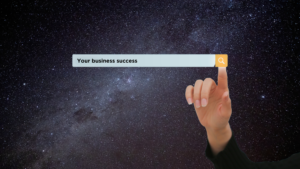In the dynamic world of marketing, assumptions can be a double-edged sword, especially when clients provide limited insights. Targeting audiences based purely on demographics often leads to common pitfalls, laying bare our preconceived notions of people and behaviours. From presuming that young people are all about mobile phones, TikTok, and podcasts to believing that Broadcast TV is the domain of the older generation, marketers can easily fall into these traps. However, the recent Ofcom Media Nations report challenges SOME of these assumptions, urging us to rethink our marketing strategies.
Embracing the Evolution of TV Viewing:
As expected, overall TV viewing is declining, and mass audiences for broadcast programs are dwindling—a fact familiar to marketers. Traditional TV advertising to younger audiences has proven relatively pointless and, therefore, not worth the investment. The power of video has shifted into the hands of the masses, giving us the freedom to choose what, when, and with whom we watch.
The Generational Common Ground:
The Ofcom report not only confirmed the decline in traditional TV viewing among younger demographics, but it also delivered a surprise: even older audiences are part of this trend. In the past, the notion that Broadcast TV was primarily watched by older audiences seemed unshakeable. However, that reliable and habitual “older audience,” known for their loyalty to shows like Coronation Street and Strictly Come Dancing, watched 8% less broadcast TV in 2022 than the previous year—a substantial drop considering the surge in TV consumption in 2021 when options were limited.
Perhaps what’s most intriguing is the unexpected common ground between generations. Millennials and Gen Z are rapidly introducing technology to older audiences, bridging the gap between them. The report revealed that older viewers are increasingly embracing streaming services, albeit at a rate of only 12%. This finding highlights the evolving media landscape and the need to abandon outdated demographic assumptions.
The Power of Video in a Changing World:
As marketers, we must recognize that video remains a powerful platform, format, and tool for reaching audiences of all ages. However, relying solely on demographic insights is no longer sufficient. And surely, we’re past that now? With so much data at our fingertips to harness in a multitude of ways, putting our consumers into boxes based on their age, gender or other protected characteristic seems very uncreative.
The world is evolving rapidly, and media consumption habits are undergoing significant shifts across all age groups. In less than 10 years, I myself have adopted and dropped over 6 different social media platforms, cancelled three video subscription services and replaced it with 3 more and now it’s very rare I watch any TV show for longer than 15 minutes before picking up my phone. The latest Ofcom report has both told us nothing and told us everything.
By embracing the power of video in our marketing campaigns, no matter what the age group, we can connect with audiences on a deeper level and stay ahead in the ever-evolving landscape of marketing.
If you’re interest in how your business can benefit from video, click out of digital services.




